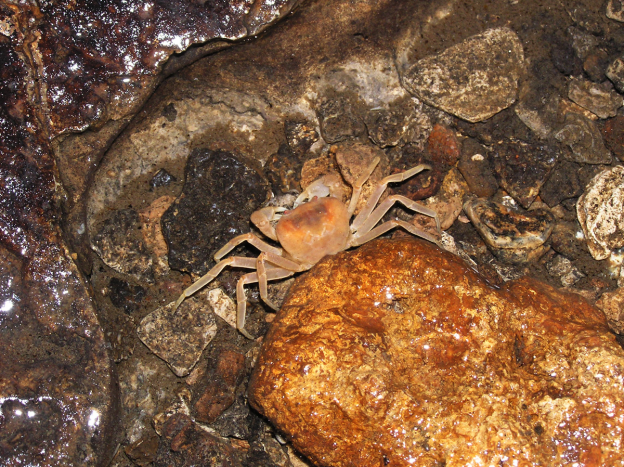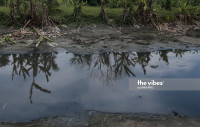CONSIDERING the millions of plant and animal species that exist on Earth, just under two million have been formally described in the past 250 years of systematic research. While the age of discovery appears to have ended in many parts of the world – this is certainly not the case on Borneo.
Every year, systematic researchers in both botany and zoology discover species and even higher groups that are new to science, particularly from the tropics. This includes familiar species that are revealed to be different from others, based on molecular studies or through the finding of morphologically (or structurally) distinct ones.
An announcement by the Institute of Biodiversity and Environmental Conservation, Universiti Malaysia Sarawak (IBEC) by researcher-authors, Jayasilan Mohd-Azlan, Wong Sin Yeng, Jongkar Grinang & Indraneil Das, list 27 new plants and animals discovered last year.
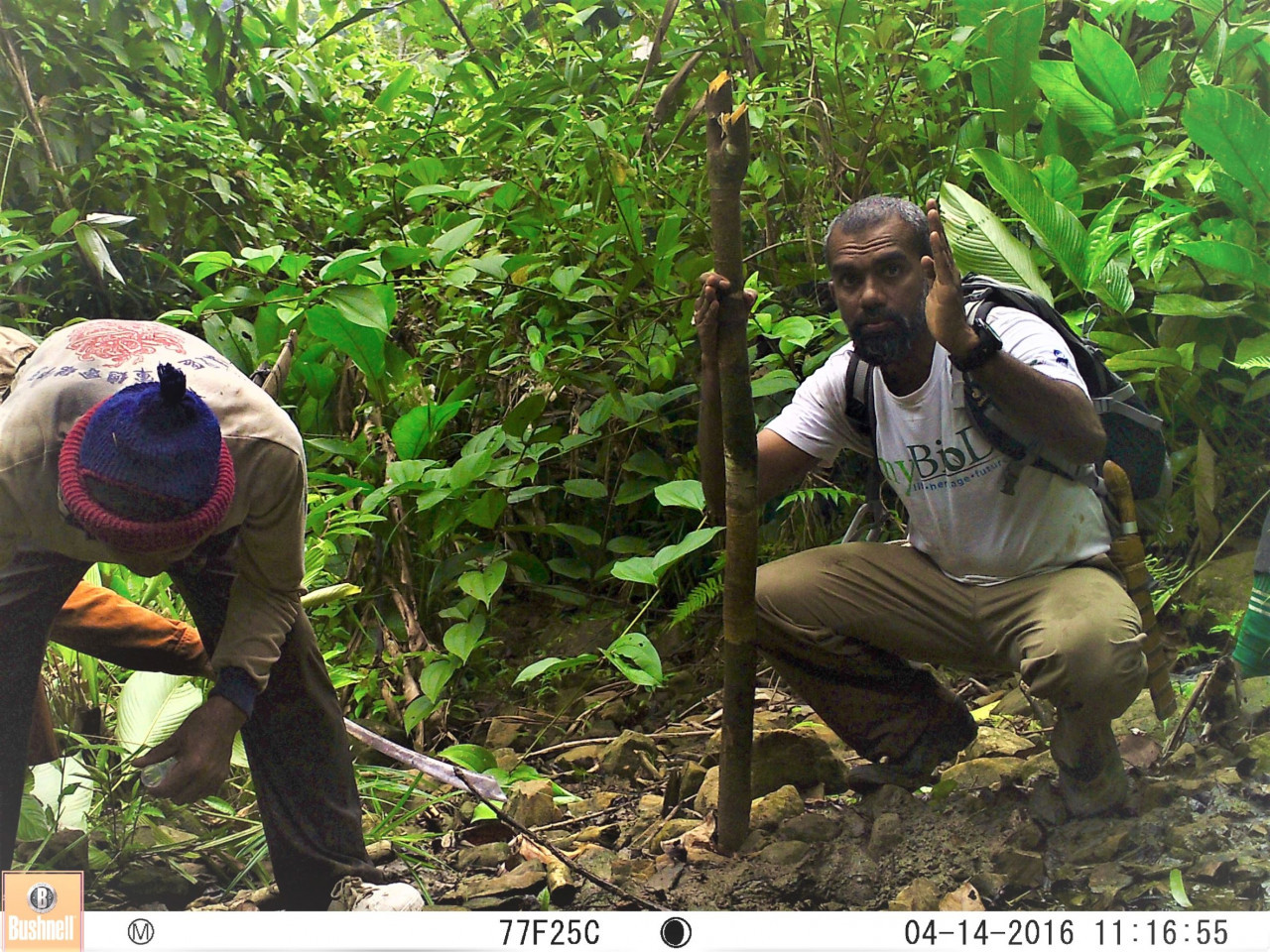
Speaking to The Vibes, assoc prof Mohd Azlan Jayasilan, an expert in wildlife diversity and conservation said: “Ongoing research projects in IBEC include taxonomy, systematics, and distribution patterns of species of 'conservation importance' in Sarawak and elsewhere on Borneo and West Malaysia.
“Our researchers have added a number of new species, including vertebrates, to Borneo’s extraordinarily diverse life-forms over the years. Last year alone, our research groups have described 27 new species and a genus, consisting of snails, an amphibian (Rhacophoridae), lizards (Gekkonidae), a snake (Paraxenodermus), crabs, and plants (Araceae).”
He said the reason for “plateauing off” of new species discoveries in many parts of the world are several, including a smaller flora and fauna and many specialists. On the other hand, Borneo is a known centre of evolution of many groups, with many species, are located in the tropics and have had fewer specialists studying them.
According to him, Borneo island is also covered with a variety of vegetation, from lowland rainforests to mangrove forests, and from heath forests and peat swamps to montane vegetation.
“Nonetheless, much of the biodiversity remains unknown due to lack of research and explorations. On the other hand, anthropogenic threats (environmental change due to impact of human activities) have been associated with several localised extinctions and expertise in systematics itself continues to decline locally as well as worldwide.
“Many of the new discoveries show up during routine studies of species diversity, explorations and ecological studies. Scientists have to determine their morphological, behavioural and genetic traits and ensure that the species have not been described previously, studying the literature and painstakingly having to go through countless herbaria or museum specimens and records for verification. These details need to be written and submitted to peer-reviewed journals in their respective fields for publication.”
He said in Sarawak, prior to submission for publication, a new rule mandates that the approval of new species names needs to come from the relevant state agencies. Only upon acceptance and formal publication of such articles in a scientific journal, does the species name become ‘officially’ endorsed.
“The truth of the matter is, such species have been in existence for millions of years, and it's only now that we are discovering them. This shows how little we have invested in such endeavours, and reveals our own failures to study what we have in our own backyard.
“The science of taxonomy (classification of life-forms) continues to languish on account of lack of interest in young students, difficulties in getting funding for taxonomic research, permitting hurdles and the general perception as being of low scientific value among the academic community.”
Species discovery
According to Mohd Azlan, researcher Marzuki and others last year documented a total of 122 land snail species, which include 13 new species and two new records from eight limestone hills in the district of Bau in Sarawak.
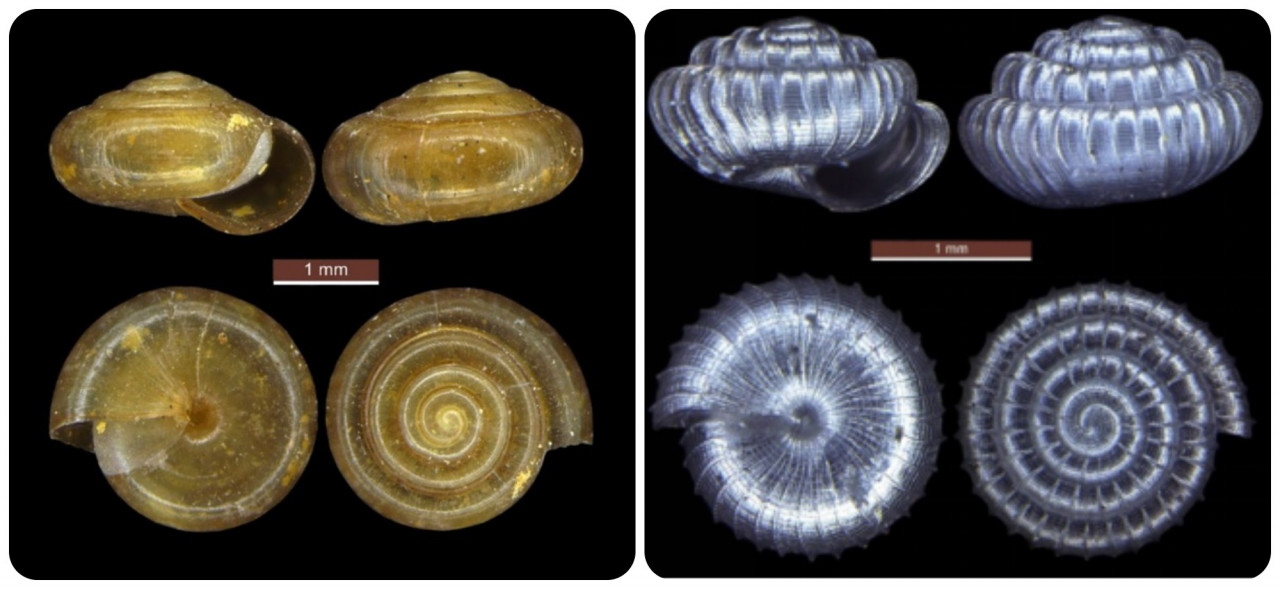
“Most of the species recorded in this study are endemic to Borneo and some are limited to the Bau area. Astonishingly, nine out of 13 new species were described just from the Fairy Caves Nature Reserve in Gunung Kapor, which is only a few hours by road from Kuching. This locality is a well-known tourist attraction. One of the new species, Microcystina paripari is named after the Nature Reserve.”
Another species, Paralaoma sarawakensis, is one of the most remarkable new species found in Bau, with striking shell sculpture. The radial sculpture consists of well-spaced, coarse, orthocline, slightly sinuous, narrow ribs together with distinct, moderately spaced, continuous spiral striae arranged as dashed lines, that resemble juvenile Sinoennea snails.
“Apparently, seven out of eight Microcystina snail species are endemic to the Bau area, six being new to science. Approximately 43% of the total land snail species in Sarawak can be found in the Bau region. The diversity in the group is expected to increase as numerous limestone forests are yet to be properly surveyed."
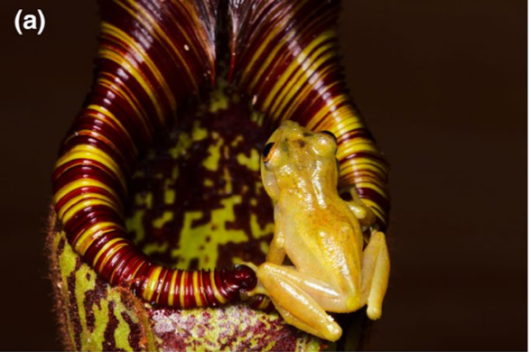
The authors from IBEC also revealed a spectacular new amphibian, Philautus nepenthophilus Etter was discovered by researchers Haas, Lee, Pui, Das & Hertwig last year. This species was found at the Church Camp of Gunung Murud. “It was discovered during an expedition to the tallest mountain in Sarawak and is unusual among these direct-developing (no tadpole stage) frogs inhabiting within the pitcher plants (Nepenthes mollis) several metres above the ground.
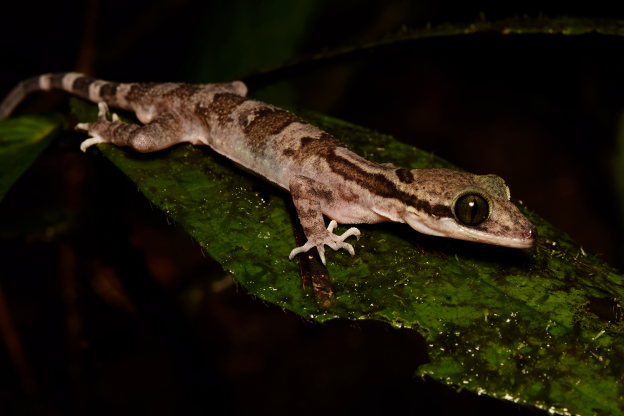
Two gekkonid lizards (Cyrtodactylus hantu) were discovered by Davis, Bauer, Jackman, Nashriq and Das, last year and another species Cyrtodactylus miriensis was found by Davis, Bauer, Jackman, Nashriq and Das in the same year. Both these species were previously considered to represent a single widespread species, and genetic and morphological evidence revealed these finds as cryptic species.
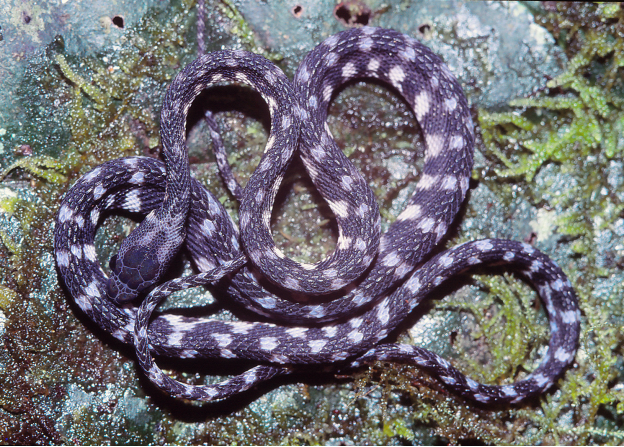
The year also saw the description of a new genus of snake (Paraxenodermus) by researchers Deepak, Lalronunga, Lalmingliani, Das, Narayanan, Das and Gower. This finding was based on a species originally described in Gunung Kinabalu in Sabah and referred to as Stoliczkia borneensis.
“The paper shows a relationship of the Bornean species with other southeast Asian snakes of the family Xenodermidae, rather than to the Indian snakes of the genus Stoliczkia."
New crab species and herbaceous plants
The year also saw a new species of freshwater crab, Arachnothelphusa sarang, described by scientists Grinang and Ng. This crab species is the second species of the genus and was recorded from a completely dark cave system in Borneo.
“The poorly-developed eyes and very long legs of the crab are a significant adaptation to live in a dark environment and for scampering over rocks.
“Only a few specimens of these crabs were collected from the cave in the Bukit Sarang limestone formation in Bintulu. These caves are popular for birdnest collection on a commercial basis,” said researcher-scientist Grinang.
He also said there are numerous limestone caves scattered across the state, and future discoveries of new species to science are expected, particularly from these relatively underexplored sites.
Last year’s discoveries also featured nine members of the Araceae (Schismatoglottis pantiensis) by botanists Wong, Boyce and Hoe – Schismatoglottis roh. Wong and Boyce also identified Homalomena joanneae and the Homalomena puncticulosa.
.jpg)
Wong and Boyce also identified Homalomena santubongensis and the Schismatoglottis adducta, while the Schismatoglottis caesia and Schismatoglottis giamensis and Schismatoglottis laxipistillata were also described by Wong, Boyce and Hoe.
Together, these additional finds add up to 201 species of the Homalomena of which 72 are endemic to Borneo. For Schismatoglottis, the tally is 172 species of which 128 are endemic to Borneo.
“The IBEC team has contributed to more than 50% of the described species in both genera in recent years,” said Wong.
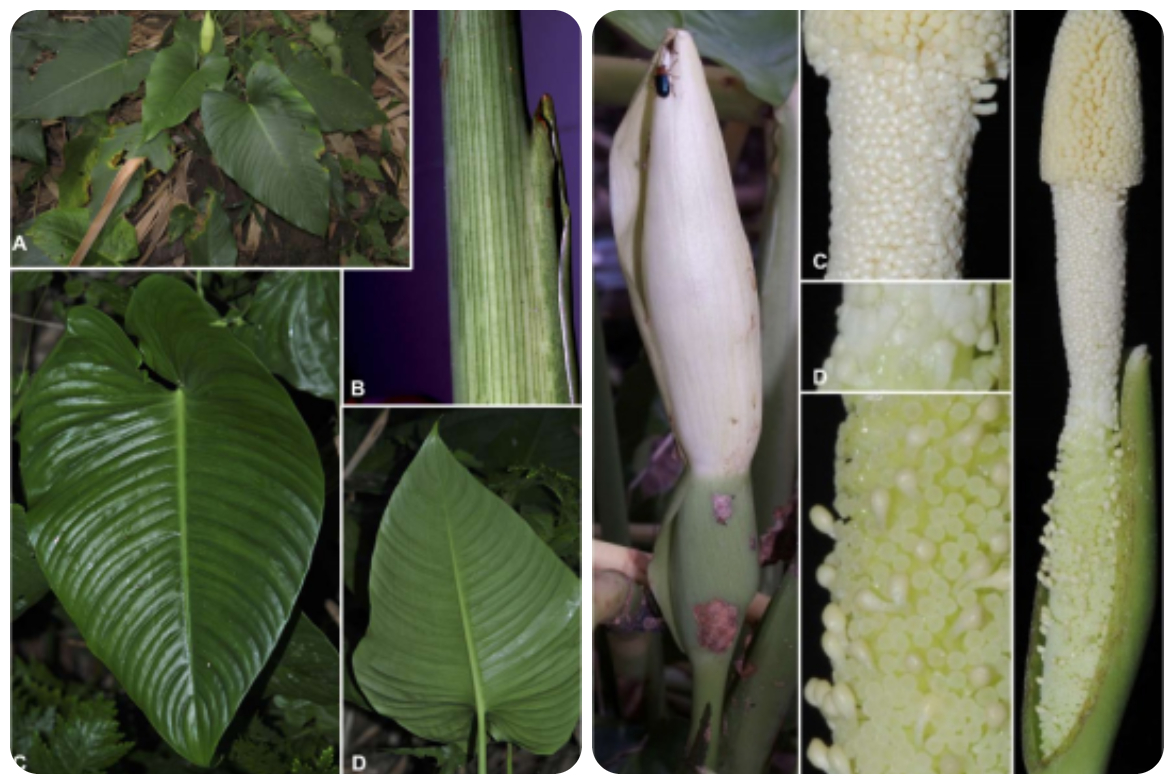
According to Wong, with the addition of Homalomena santubongensis, the described species of the lanceolate-leaved Homalomena Chamaecladon clade is now the third finding of its kind in northwestern Borneo. Although Homalomena paucinervia is highly similar in overall appearance, it is different not only by the characteristics described here but also geographically and to an extent ecologically – with H. santubongensis restricted to the more open and somewhat drier Paleogene sandstones of the Santubong Peninsula, while H. paucinervia occurs on the much wetter Cretaceous sandstones of the Matang Massif.
“In addition, to these discoveries, a team with members from our institute is working on the description of a new genus of freshwater crabs which will comprise a further five new species. Another research group here is working on the descriptions of several new species of lizards, primarily skinks and geckos.
“Within the Araceae alone, there are 142 confirmed new species, the formal descriptions of which are in various stages of preparation. Our work demonstrates that Borneo is a hotspot for discovering many more novel species and higher lineages.
“While conservationists are rightly saddened by the loss of the iconic Sumatran rhinoceros on Borneo, all need to be concerned with the potential extinction of many more species in this region, the identifies of many of which are unknown,” he added. – The Vibes, January 4, 2022



